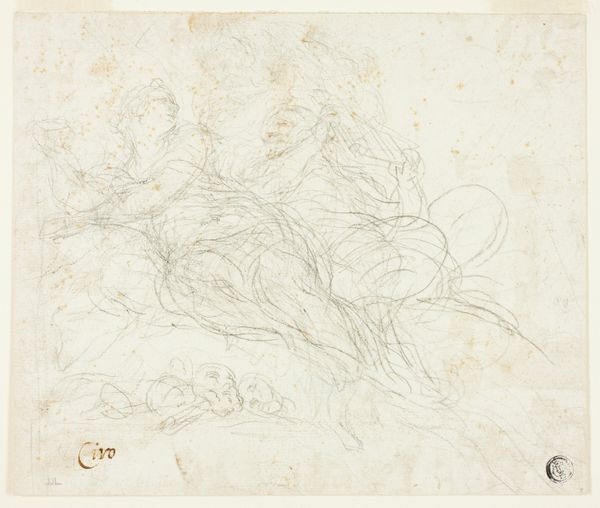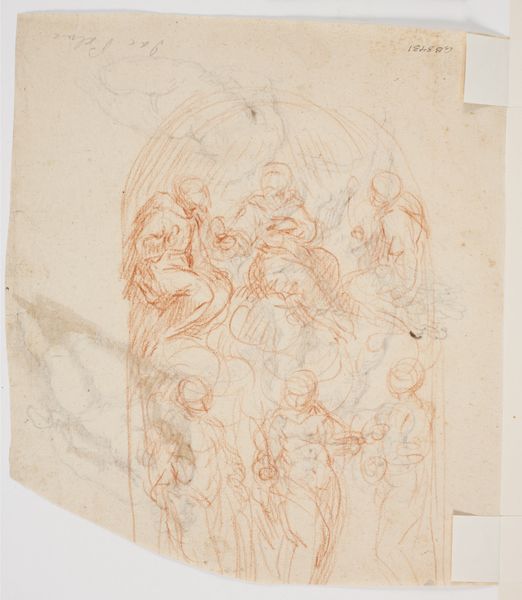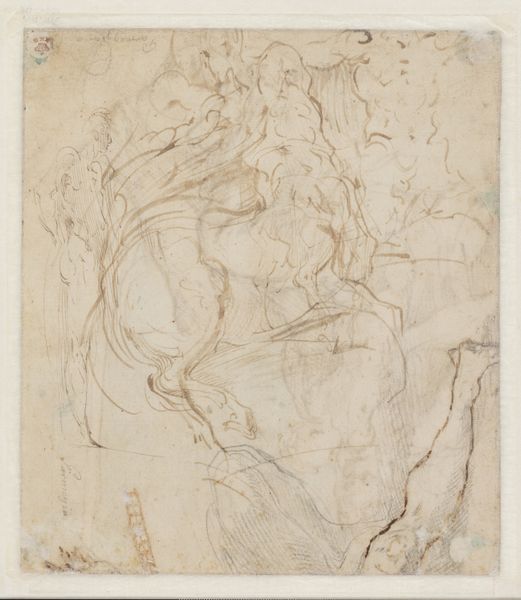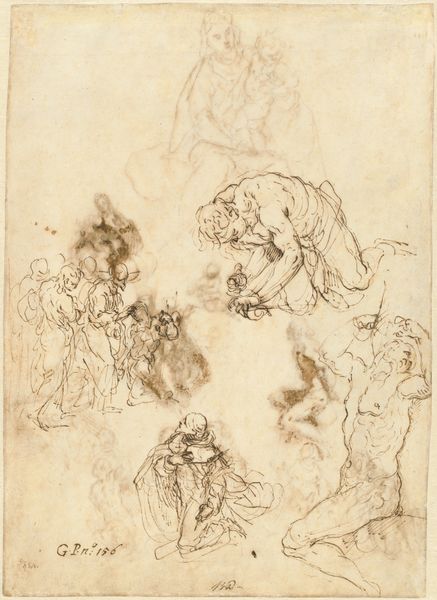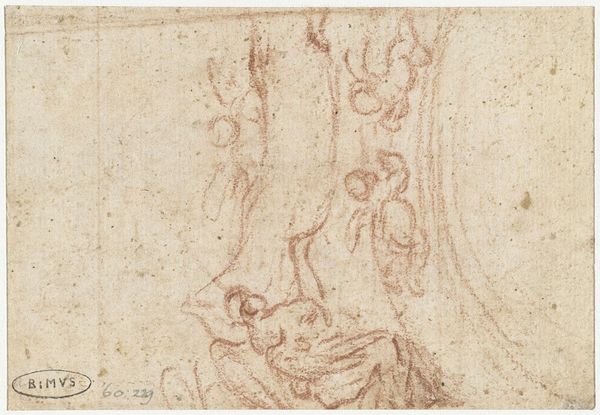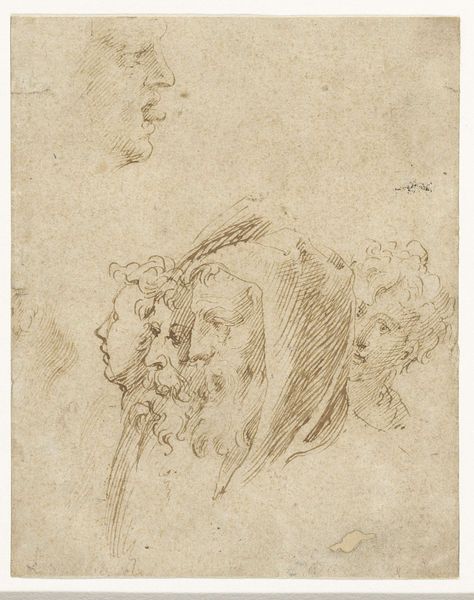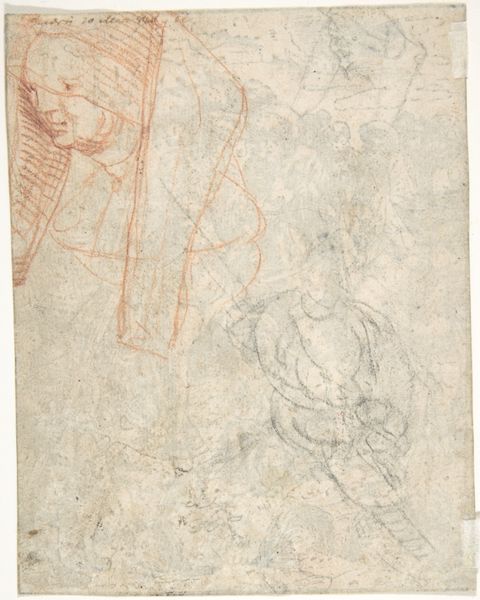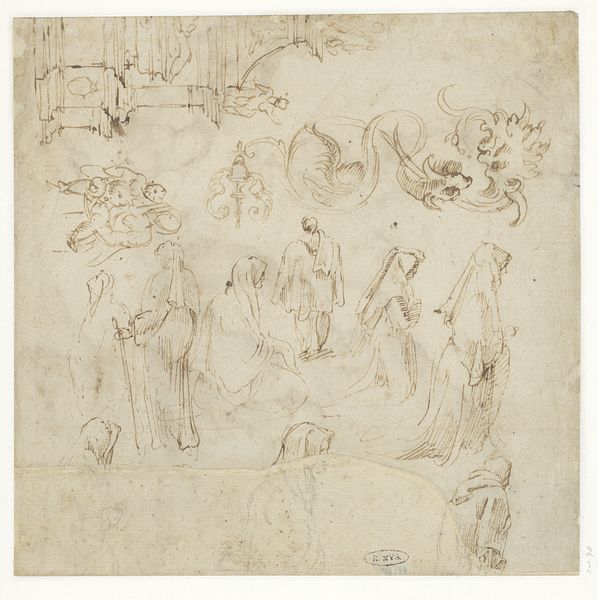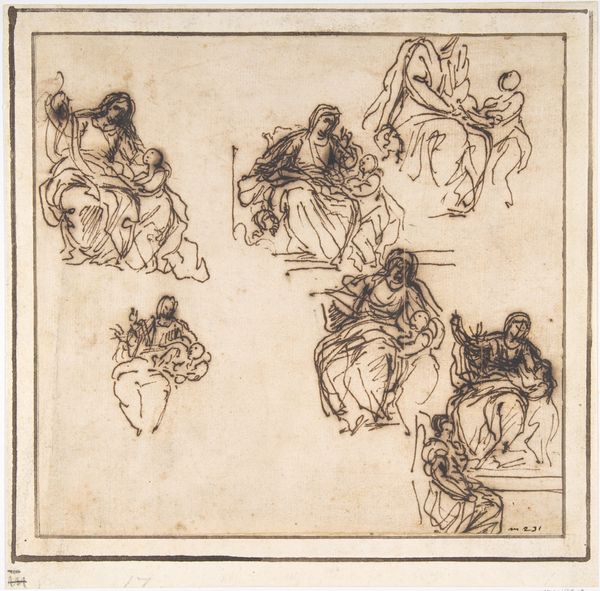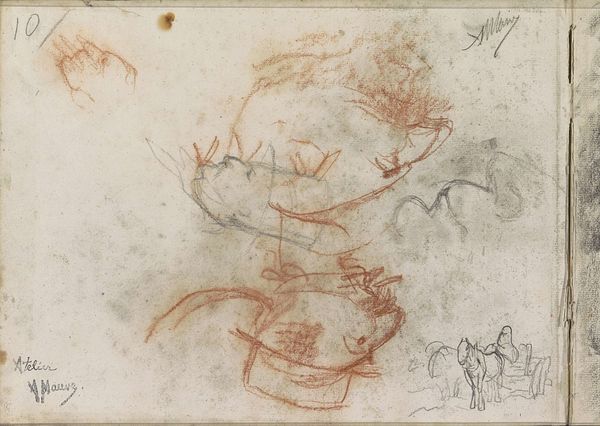
drawing, paper, pencil, chalk
#
drawing
#
figuration
#
paper
#
11_renaissance
#
pencil
#
chalk
#
history-painting
Dimensions: 215 × 206 mm
Copyright: Public Domain
Curator: Here we have a drawing on paper with pencil and chalk, attributed to Ciro Ferri, titled "Unidentified Biblical Scene." Editor: My immediate sense is one of quiet drama. The lines are delicate, almost hesitant, giving it a dreamlike quality. Curator: Ferri, a prominent figure in the Roman Baroque, operated in a world dominated by the Church, influencing art and thought. This biblical scene, though unidentified, connects with the period’s larger interest in history painting, in sacred dramas as pedagogical tools for social control, for conveying specific religious beliefs about gender roles, social hierarchy, and divine will. Editor: It's interesting you mention pedagogy, because despite the apparent softness of the sketch, certain images are indeed stark and imposing. Notice the bowing figure in the foreground, rendered in great detail—is the angle a form of obedience? His clothing is more realistic than the barely-there sketches in the periphery. Curator: Exactly! Consider how, within a patriarchal framework, certain bodies, like the subservient one you've mentioned, are centered in religious narratives, perpetuating cultural attitudes of dominance. How are these characters shaped to tell a specific moral story that continues to influence social perception? Editor: The repeated oval shapes are arresting; the artist created depth by layering many, with a key cluster hovering near the center-left. Are we meant to feel the pressure of a watching crowd? Curator: Indeed. Religious works can operate to create a sense of surveillance, or a perpetual accountability to religious dogma. In addition to the historical-religious context, looking at the symbolic and emotional resonance this image continues to have could provide us new paths. Editor: Looking again, I also notice an overall feeling of transience – this medium implies change and process. Ferri is searching for clarity amidst religious and social expectation, giving this unfinished scene a voice that speaks even today. Curator: It also shows how art serves to represent shifting ideas within ideological structures. The unfinished quality of this work might reflect moments of negotiation, where religious values can be questioned and reconstructed. Editor: I'll be pondering the balance between the definite lines and ethereal suggestions in this sketch—and what such tension tells us about image making itself. Curator: It reminds us how each image is the result of complex sociohistorical forces working together. It seems this image carries not just history, but its potential reinterpretation within present contexts.
Comments
No comments
Be the first to comment and join the conversation on the ultimate creative platform.
